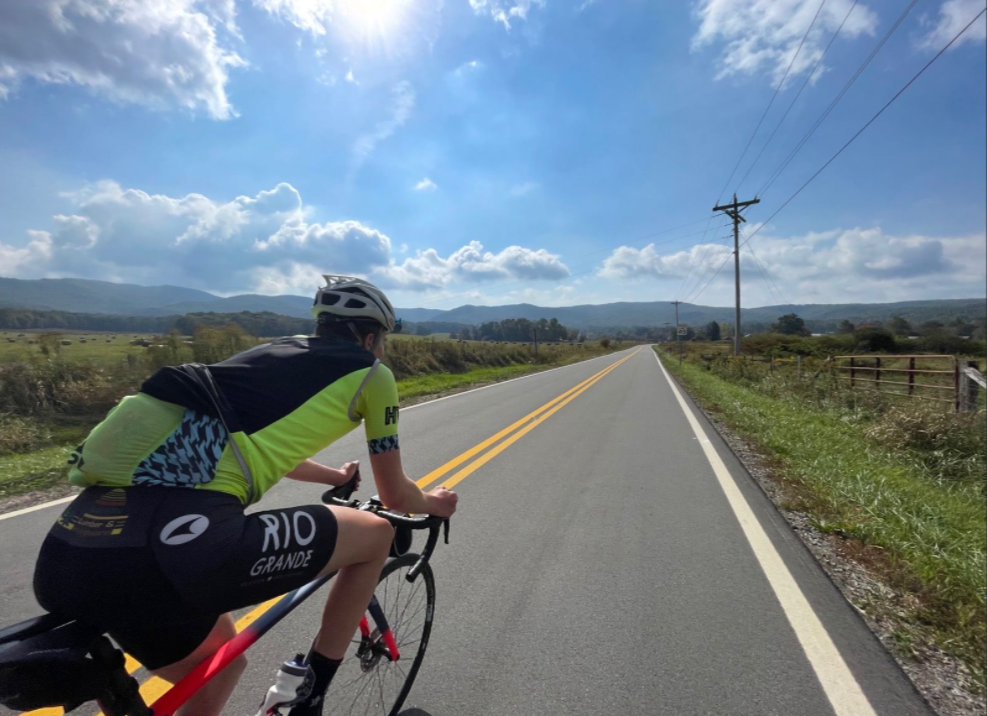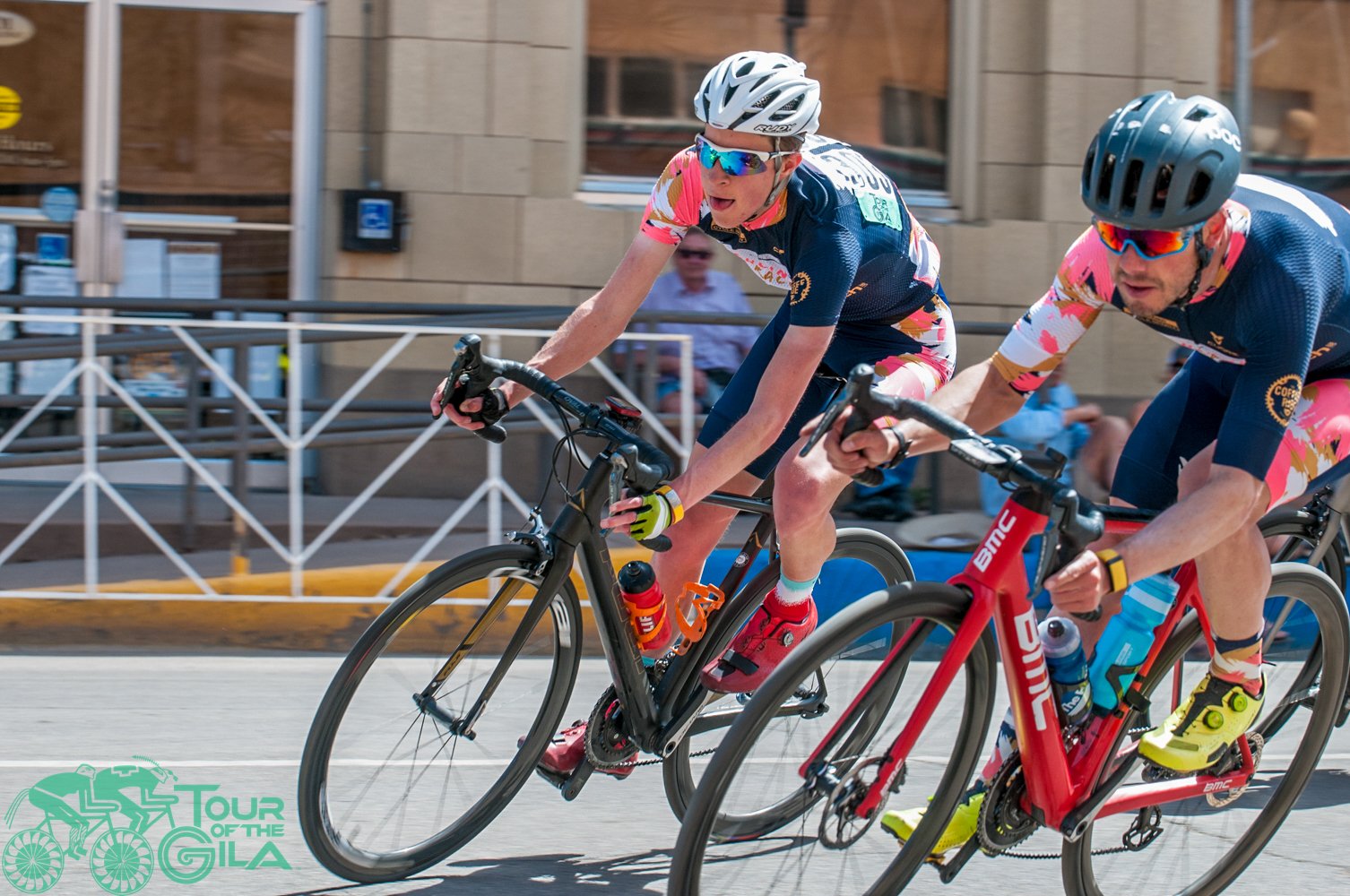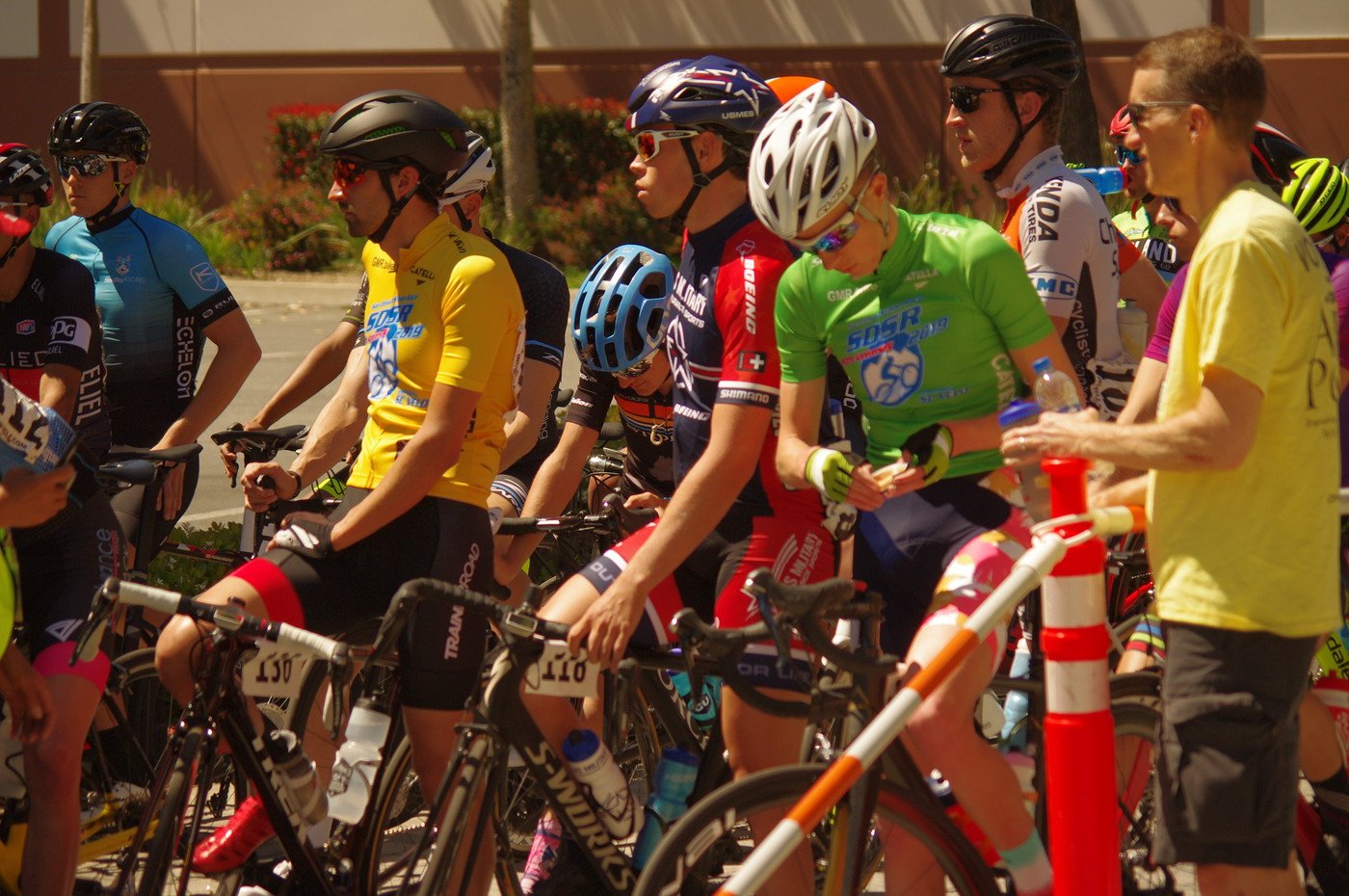Five Tips to Build Cycling Endurance
Endurance Cycling
There’s a reason top cyclists use the winter months to build their fitness upon a foundation of endurance miles… because it works!! We’ve heard it said, “if you want to have a high peak, you need to build a broad base.” But, is there a singular “best way” to build our endurance?? Certainly not.
Why does cycling muscular endurance training work? Without getting too in depth within this article, endurance cycling gives you the biggest training benefit with minimal cost. Any time you train, there is a cost/benefit ratio. The “cost” of the workout is the stress that it places on the body. How long will it take to recover from this session? How taxing will it be on your body? The benefit of a workout is how much the workout will help you improve. What system are you trying to train? Will this workout give me the benefit I am looking for?
We must select workouts that will give us the biggest benefit for the smallest cost possible. If you needlessly select a hard workout that does not give you any added benefit over an easy one, then you are causing unnecessary fatigue that can create a higher risk for overtraining or leave you too tired to complete the next days workout.
For example, research has shown that riding above endurance zone and into tempo or sweet spot zone does not give the athlete any added benefit over endurance cycling, but only fatigues them more. Many riders fall into this pitfall of thinking harder is better and do way too many sweet spot intervals, but this is not always the case. We want to minimal effective dose of a workout that will give us the most amount of gains.
Training for endurance cycling will give you a huge benefit, but it is not too taxing and so it can be repeated day after day. This means you can train more consistently with less fatigue and build your fitness week after week. Cliché as it sounds, consistency is key.
Believe it or not, professional cyclists do not train with more intensity than you do, the main thing that sets them apart is the large volume they spend training within endurance zone. Racking up larger volume at endurance zone allows them to build huge aerobic engines without leaving them too fatigued. The same principles apply to you.
Each cyclist will have different requirements for their endurance-building based on their goals, age, experience, terrain, strengths and weaknesses, and time available to train… just to name a few. That being said, some elements are universal and fundamental to building optimal endurance.
Related reading: What are Base Miles?
Cycling Endurance Training
Generally speaking, we identify endurance riding as 60-75% of FTP. Too often, we see athletes come to us who ride far too many hours outside of this range. Why? Usually, it’s because they don’t have designated Endurance rides scheduled within their training. A strong base doesn’t develop simply by riding our bike aimlessly, we need to be intentional with targeting this critically important area of our training.
Five Tips to Build Cycling Endurance
Many riders are unsure of how to increase cycling endurance. However, there is no need to make their cycling endurance training plan more complicated than it needs to be. Here are some practical tips to help you improve your cycling endurance.
Related Related Reading: Cycling Endurance Training for Beginners
1.Cut Out Junk Miles
A very efficient, well-executed Endurance ride will have less than 10% of the ride spent in Zone1/Recovery. Not everyone wants to jump on the bike and start out hitting endurance on the first few pedal strokes. But, push your “warm-up” effort above 50% of FTP as soon as you can and shorten it to 5 minutes. When heading back into town, keep riding to your driveway instead of “cooling down.” We don’t need to add hours to our training until we maximize the training time we have available already.
Related reading: Recovery vs Endurance Rides
2.Incorporate Intervals
Intervals for cycling endurance training? Yes! Interval training does not necessarily mean high intensity. Instead, it’s descriptive of how a workout is organized. Breaking a ride up into smaller “pieces” can keep your cycling endurance training plan fresh and engaging while logging our endurance miles. One of my favorite rides is the Aerobic Ramp, which can be a great endurance-builder. A simple Aerobic Ramp cycling endurance workout might look like this:
Aerobic Ramp: 2-Hour Endurance/Zone 2
4 sets of 30 minutes
Each set consisting of 10m at 60%, 10m at 65%, 5m at 70%, 5m at 75%
No rest between each set
If a warm-up is needed, ride the first 10m of the first set between 50-60% of FTP
See our Blog Post on Interval Training
3.Add Progression
Do we ride only Zone 2 to build our endurance? Absolutely not! If we don’t add progression to our long distance cycling training plan, we run the risk of a cycling plateau. The primary way we optimize our endurance base is by continually adding duration and/or intensity.
In the example of the Aerobic Ramp above, a natural progression of duration might be to add a 5th set (30 minutes) to the ride during week two and a 6th set (30 minutes) in week three. That would represent a total 12.5% increase in training for the 8-hour-a-week athlete over a 3-week period just by focusing on the progression of one workout.
We should also be adding intensity to our overall workload. As we continue to build our endurance base, we need to train in zones above Zone 2/Endurance. A natural progression would be to add Tempo training:
Endurance + Tempo: 2 Hours
Within an Endurance/Zone 2 ride, execute 2 x 15-minute intervals at 80-85% of FTP with 5 minutes at 60% FTP after each effort.
By adding duration and/or intensity to our workouts, we build our endurance base and avoid stagnation.
See more from Brendan’s post…Endurance Base: Is it all Zone2?
4.Cross Train
The cycling season can belong, and not all of our gains have to come directly from cycling endurance workouts. Especially during the winter months, incorporating cross-training into our overall training program can help keep things fresh and “hungry” to ride while activating and developing muscles that aren’t typically used in cycling. Strength training, swimming, running, snowshoeing, walking, hiking, paddle-boarding…are simple ways to stay fit and sharp while giving us a break from our bikes.
As a 45-year-old Masters rider, I’ve personally experienced the benefits of adding strength training to my weekly routine. I also hike and walk to help mix things up.
If you want to go deeper into our conversation on strength training, see our post here
5.Maintain
As we move into the racing season, we don’t want to give up the endurance base we’ve worked so hard to establish. Weekly cycling endurance workouts are important in keeping our endurance throughout the season. It’s easy to fall into the trap of racing on the weekend, recovering during the week, and racing again on the weekend. However, we need to make sure we commit training-time to maintain our endurance base:
75% Normalized Power Ride
On today’s ride, shoot for a normalized power of 75%. So, you can coast in the draft (if a group ride) or downhill, but hit the rollers hard and mix in a few efforts to keep the NP up. Practice race-day nutrition and hydration.
A ride such as this 75% NP Ride, gives the athlete some flexibility to the workout structure but addresses the need for the continued maintenance of endurance work within their cycling endurance training plan.
There is no single, best way to build an endurance base that is universal for all cyclists. At EVOQ, we incorporate these 6 elements into our cycling training programs, not only for our athletes but also for our training.
Cycling Endurance Workouts
There are a couple of simple workouts you can do as a part of your cycling endurance training plan to build your cycling endurance:
Long Slow Distance: A long ride at around 60-70% of FTP will help to train muscular endurance, improve fat burning capacity and build your aerobic engine. The key with these rides is that they must be steady. Too often, riders will get antsy and start sprinting up the hills. On the flipside, other riders coast the downhills when they could still be pedaling and miss out on valuable “reps” in the legs. Make sure to keep your power and heart rate within zone 2 as much as possible on these rides. These should be a staple of your endurance cycling training plan.
Aerobic Threshold: If you are strapped for time on a weekday with maybe only 60-90 minutes to ride, try riding at the upper end of zone 2 at around 70-75% of FTP as a part of your long distance cycling training plan. This will present a little more of a challenge while still keeping you within zone 2 range. The higher power will generate a higher workload and can be a great way to get in some extra KJs on a weekday to build cycling endurance.
See Also: Indoor Cycling Training Guide
Cycling Endurance Training for Beginners
If you are new to cycling, keep it simple. Ride your bike. A lot of newer riders can become overwhelmed with the plethora of information regarding how to get good at cycling, but in your initial years of training, the best way to get fast is by consistently putting miles in on the bike. Something as simple as riding 5-6 days per week year- round will give you a huge benefit.
The main focus of a cycling training plan for beginners is consistency. If you are thinking of increasing your mileage as part of your cycling endurance cycling training plan for beginners, start out slowly. First focus on increasing the frequency of your rides rather than your duration. Once you’ve become adapted to riding most days of the week, you can then look at increasing the duration of your rides to continue your progression. As you get fitter your body will require more and more overload, you will then want to look at incorporating more interval workouts into your training regime or getting a power meter.
If you want to go far in the sport of cycling, seeking out expert guidance early in your journey will help set you on the right path from the get-go and accelerate your progress.
See also: Cycling Training For Beginners
Consider Your Cycling Nutrition
If you want to drive your car across the country, you need to make sure that you have enough of the right fuel to get you there. The same principle applies to your cycling nutrition plan. If you want to be able to ride your bike far and fast, you must put in enough of the right foods to help increase your cycling endurance.
A debunked old-school misconception is that eating less will help you to improve your cycling endurance, the thought process being that it will train your body to burn more fat and you won’t need to eat as much food. This could not be farther from the truth. Many, many cyclists unknowingly hold themselves back from achieving their full potential due to underfueling their cycling training.
Back to the car analogy, the more fuel you put in your car, the farther you can drive it. In the same way, the more you fuel your rides, the longer you will be able to go. We have lots of resources available at EVOQ.BIKE to help dial in your cycling nutrition, but here is a quick run-down of how to fuel your endurance training cycling plan.
Carbohydrates are a limited resource within your body. During cycling, you will burn a combination of carbs and fat while riding in endurance zone. However, even the leanest athletes have practically unlimited fat to tap into as a fuel source, but we humans can only store a limited amount of carbs our muscles. A carbohydrate based diet will help you improve your cycling endurance. Below is a sample cycling diet plan for a long endurance ride.
Cycling Meal Plan for a Long Endurance Ride
The night before: Consume a carbohydrate meal the night before your endurance ride. This will help top-up your glycogen stores for the next day’s ride.
Pre-ride meal: Consume a carbohydrate-based breakfast with some protein. Examples include oatmeal, fruit, rice, or whole grain bread.
During the ride: Consume 90-120 grams of carbohydrates per hour of your ride. This will help to keep your glycogen stores fully topped up so you can keep going! This can be achieved via drink mixes, energy bars, gels, or even maple syrup in a flask. This may seem like a lot of carbs, but you will notice a huge difference in your cycling endurance.
Related Post: Eating While Cycling
After the ride: Make sure to refuel with carbs after your ride. This is a time when your body is trying to repair and rebuild from your training so you can come back stronger. Eat a carbohydrate-based meal, ideally within 60 minutes of finishing your ride.
We have more resources on cycling nutrition here
Endurance Cycling Training Plan
For your cycling endurance training plan, set a realistic amount of hours for the week and ride consistently. Try to do at least one longer ride per week that will be equal or greater than your target event.
We provide custom endurance training cycling plans as a part of our one-on-one coaching service. Learn more about our training programs here!
If you enjoyed this content, be sure to check out our blog and Youtube channel for more great cycling training tips.



